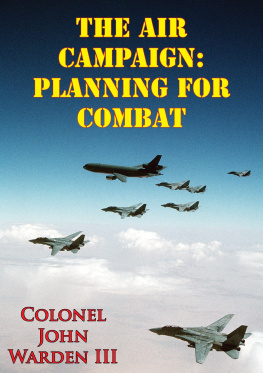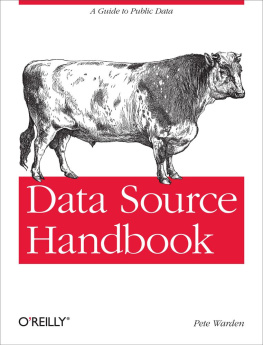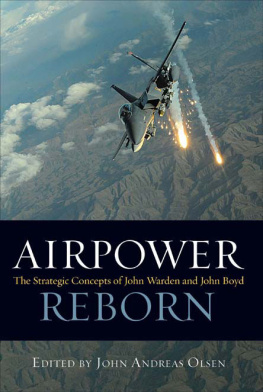John A. Warden III - The Air Campaign: Planning For Combat
Here you can read online John A. Warden III - The Air Campaign: Planning For Combat full text of the book (entire story) in english for free. Download pdf and epub, get meaning, cover and reviews about this ebook. City: San Francisco, year: 2014, publisher: Tannenberg Publishing, genre: History. Description of the work, (preface) as well as reviews are available. Best literature library LitArk.com created for fans of good reading and offers a wide selection of genres:
Romance novel
Science fiction
Adventure
Detective
Science
History
Home and family
Prose
Art
Politics
Computer
Non-fiction
Religion
Business
Children
Humor
Choose a favorite category and find really read worthwhile books. Enjoy immersion in the world of imagination, feel the emotions of the characters or learn something new for yourself, make an fascinating discovery.
- Book:The Air Campaign: Planning For Combat
- Author:
- Publisher:Tannenberg Publishing
- Genre:
- Year:2014
- City:San Francisco
- Rating:4 / 5
- Favourites:Add to favourites
- Your mark:
- 80
- 1
- 2
- 3
- 4
- 5
The Air Campaign: Planning For Combat: summary, description and annotation
We offer to read an annotation, description, summary or preface (depends on what the author of the book "The Air Campaign: Planning For Combat" wrote himself). If you haven't found the necessary information about the book — write in the comments, we will try to find it.
The Air Campaign: Planning For Combat — read online for free the complete book (whole text) full work
Below is the text of the book, divided by pages. System saving the place of the last page read, allows you to conveniently read the book "The Air Campaign: Planning For Combat" online for free, without having to search again every time where you left off. Put a bookmark, and you can go to the page where you finished reading at any time.
Font size:
Interval:
Bookmark:


This edition is published by PICKLE PARTNERS PUBLISHINGwww.picklepartnerspublishing.com
To join our mailing list for new titles or for issues with our books picklepublishing@gmail.com
Or on Facebook
Text originally published in 1988 under the same title.
Pickle Partners Publishing 2014, all rights reserved. No part of this publication may be reproduced, stored in a retrieval system or transmitted by any means, electrical, mechanical or otherwise without the written permission of the copyright holder.
Publishers Note
Although in most cases we have retained the Authors original spelling and grammar to authentically reproduce the work of the Author and the original intent of such material, some additional notes and clarifications have been added for the modern readers benefit.
We have also made every effort to include all maps and illustrations of the original edition the limitations of formatting do not allow of including larger maps, we will upload as many of these maps as possible.
The Air Campaign Planning for Combat
By
Col John A. Warden III
Contents
Air-to-air view of two F-15 Eagles
D-Day landing operations
C-47 takes off for Buna front in New Guinea campaign
German ME 109s roar over English Channel
B-24s use North African base for historic Ploesti raid
British Spitfires show their US Army Air Forces markings
B-52 Stratofortress maneuvers during a joint exercise
B-25 of Doolittle raid carries war to Japan
B-29 uses Saipan for launching point toward Tokyo
B-17s take part in bombing raid over Berlin
KC-135R tanker gets ready to refuel an F-16
B-26 Marauder covers the June 1944 D-Day landings
A-10 Thunderbolt II "Tank Buster" banks to the right
B-17 Flying Fortress unloads bombs over Berlin
B-24 skims over nesting goonie birds on Midway Island
B-25 Mitchell takes bombing run over Boram Field, Wewak
B-24s bomb harbor installations at Dunkirk, France
General Chennault hosts inspection of his HQ unit in China
F-111 airdrops 24 Mark-28 low-drag bombs
1. Air superiority cases
2. Air superiority variables

In the short history of air warfare, no nation with superior air forces has ever lost a war to the force of enemy arms. Air superiority by itself, however, no longer guarantees victory. This book, one of the first analyses of the pure art of planning the aerial dimension of war, explores the complicated connection between air superiority and victory in war.
In The Air Campaign , Colonel John A. Warden III focuses on the use of air forces at the operational level in a theater of war. The most compelling task for the theater commander, he argues, is translating national war objectives into tactical plans at operational levels. He presents his case by drawing on fascinating historical examples, stressing that the mastery of operational-level strategy can be the key to winning future wars. Colonel Warden shows us how to use air power more effectivelythrough rough mass, concentration, and economy of forcesbecause, he warns, the United States no longer holds an edge in manpower, production capacity, and technology.
Simply put, an air force inferior in numbers must fight better and smarter to win. This book offers planners greater understanding of how to use air power for future air campaigns against a wide variety of enemy capabilities in a wide variety of air operations. As the reader will see, the classic principles of war also apply to air combat. One of the author's important contributions is to demonstrate that perception to those whose grave responsibility one day may be to plan and carry through a victorious air campaign.
Bradley C. Hosmer
LIEUTENANT GENERAL, US AIR FORCE
PRESIDENT, NATIONAL DEFENSE UNIVERSITY
The Air Campaign is an attempt to come to grips with the very complex philosophy and theory associated with air war at the operational level. This book is for combat officers of any Service who might find themselves on an operational-level staff. More specifically, it is for the air officer who wants to think about air campaigns before called on to command or staff one. It is devoted to how and why air power can be used to attain the military objectives needed to win a war.
What this book is not is quite important also.
This book is not about tactics and does not address how to bomb a target. It is not technical and does not address specific weapon systems. It is not specific to any particular air force and thus does not address directly any of the various disputes over doctrine that are common in many air forces. Likewise, it avoids using terms that recently have come into vogue but are still too esoteric to be widely understood or usable.
As a consequence, older words like "front" are used, rather than more specific ones such as "forward line of troops." My belief is that the more general term better conveys the image needed for a conceptual discussion at the operational level.
Two other areas not addressed in this book are the uses of space and nuclear weapons.
With respect to the use of nuclear weapons, one either believes that their use cannot be squared with any rational view of war or one believes that they are in some cases usable in consonance with traditional ideas. I have not discussed space operations primarily because the operational-level commander at present has no direct control of space assets. In the near future, man certainly will spread out through the solar system. If war goes with him, the principles should not change significantly, although the concepts of depth and time may become more important than ever before.
Technologies change with great rapidity; consequently, any book on air warfare that went into depth on particular technologies would become dated very quickly. I believe that operational-level commanders must first master the basic philosophy and principles of warfare. Only then can they make current or new technologies their servant. If they try to reverse the process, they will be unable to set a course and will be driven haphazardly by every change in the storms of technical development.
On the horizon at the end of the 1980s are exciting possibilities for directed-energy weapons and for short- to medium-range ballistic missiles armed with conventional ordnance. Either or bothor something as yet undreamedmay become quite important, but only because they allow greater concentration of power or increased mobility. Successful employment will depend on using new systems in consonance with principles outlined in this book.
The reader also will note that this book includes little discussion of aircraft carrier-based air power. The lack of discussion was not meant to denigrate carrier air power by any means; indeed, in any conceivable major war fought by the United States, aircraft carriers will be a necessary part of the offensive needed to win the war. However, since this book is meant to be a guide to the use of air power, as opposed to a history of it, examples from land-based air seem sufficient to illustrate my observations.
The theory at the operational level should be the same, regardless of the point from which aircraft or missiles launch.
Next pageFont size:
Interval:
Bookmark:
Similar books «The Air Campaign: Planning For Combat»
Look at similar books to The Air Campaign: Planning For Combat. We have selected literature similar in name and meaning in the hope of providing readers with more options to find new, interesting, not yet read works.
Discussion, reviews of the book The Air Campaign: Planning For Combat and just readers' own opinions. Leave your comments, write what you think about the work, its meaning or the main characters. Specify what exactly you liked and what you didn't like, and why you think so.










